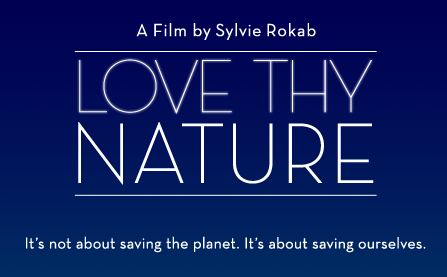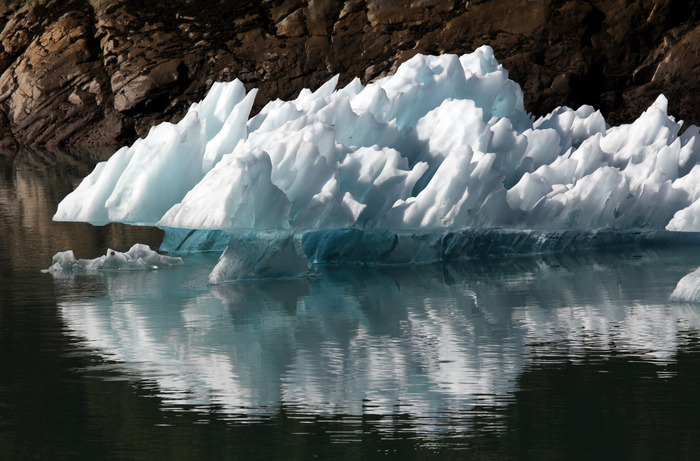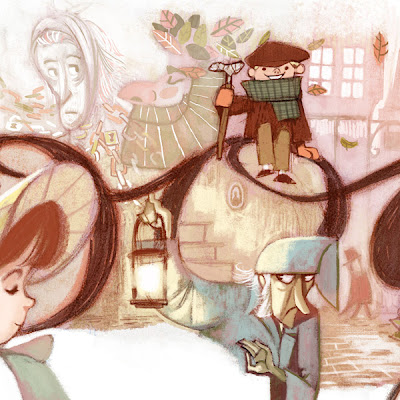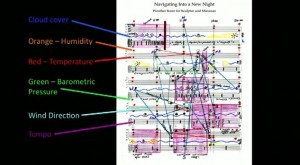Love Thy Nature: A Film About Who We Are
What we fall in love with, we protect.
When we fall in love, we transform.
Through loving and protecting nature,
we can heal ourselves and ensure
a future for our children. ”
— Sylvie Rokab —
A film in the making by award-winning documentary film maker Sylvie Rokab
who says of it “this is the film I was born to make,”
“As far as we know, only our planet gives birth to life
and among all species on earth ours is the most gifted
But have our gifts taken us too far away from what sustains us?
Take a journey through the new era of human evolution
where our hearts and minds are inspired by the wonders of nature…”
The film is currently on Kickstarter and has 10 days to go to reach its required funding
Love Thy Nature demonstrates how communion with the natural world transforms us as individuals and communities.
And that transformation encourages us to not only restore our ecosystems, but also to embrace our role as a species of double-wisdom: as stewards of our planet, including our human family.
Read MoreArt Visible from Space
Have you ever wondered if any artworks are visible from space, or thought of going on a journey of “extra terrestrial” discovery using Google Earth?.
Artist Merrill Kazanjian explores art visible from space from Google Earth Gallery
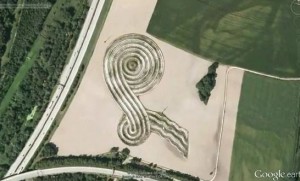
This video was created by an artist looking at that perspective – Merrill Kazanjian is an artist who creates a lot of art tutorials and shares them on YouTube.
He gives his reasons for choosing this medium for sharing:
“I am dyslexic and I always struggled with text.
Video gives visual learners a great alternative to text, and I want to supply a textual alternative for artists.
I also taught as an art teacher for eight years. My job was eliminated three times in eight years due to budgets. My first step by step videos were created with the purpose of keeping misbehaving students occupied.”
Merrill uses mixed media of all kinds, digital manipulation and traditional art methods. In this video he uses mixed media and a photocopier.
“My friend Al Alvir has a very popular Boxing/Mixed Martial Arts blog- http://shootafairone.com/ and I decided to create a character for one of the writers he has on staff (O’Toole). Allen is a big fan of Mike Tyson (heavyweight champion) and his legendary trainer Cus D’Amato who also trained managed Floyd Patterson (olympic and heavyweight champion) and Jose Torres (light heavyweight champion) so I made this character with D’Amato in mind.
I used D’Amato reference photos for my initial drawing but also had fictional “Rocky” trainer Mickey Goldmill in mind (portrayed by Burgess Meredith). Using these two icons; one from pop culture one from reality, gave me an interesting image to illustrate. In this video, I documented my process. ”
Merrill calls his YouTube channel “Kazanjian – the Unspellable Art Channel.”
http://www.youtube.com/user/kazanjianm
http://www.merrillk.com/
If you know of other artwork visible from space and would like to share it or discuss it – post it on the rainbowzebra forums. www.rainbowzebra.com/forums
Read MoreCelebrating 200 Years of Charles Dickens
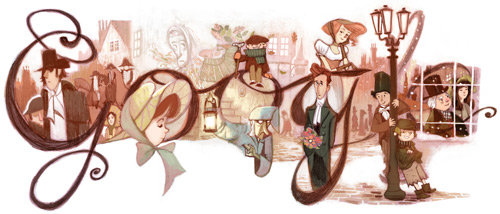 Tuesday 7th February 2012: There have been global celebrations marking the 200th anniversary of Charles Dicken’s birth. Prince Charles laid a wreath on the author’s grave in Poet’s Corner, at a service at Westminister Abbey.
Tuesday 7th February 2012: There have been global celebrations marking the 200th anniversary of Charles Dicken’s birth. Prince Charles laid a wreath on the author’s grave in Poet’s Corner, at a service at Westminister Abbey.
There was also a ceremony in Portsmouth, where Dickens was born. with readings by actor and biographer Simon Callow and actress Sheila Hancock.
A 24-hour readathon, organised by the British Council is taking place from Albania to Zimbabwe, reaching the UK at 9pm on the evening of Tuesday 7th with readings by author David Nicholls from Great Expectations, at the British Film Institute.
The Dickens Anniversary was also celebrated by the charity NewstrAid – a charity which was founded n 1854 to help men and women from the newspaper industry who were in need, and of which Charles Dickens was President from 1854 until his death in 1870
Google celebrated the day with one of its Google Doodles, and the artist Mike Dutton points out some details about the work on the Google Doodle site.
Dutton says: “We have quite a number of characters who showed up today to help celebrate Charles Dickens’ 200th birthday. Twelve recognizable ones at least. This naturally made for a pretty busy doodle, and while we managed to squeeze in a few extra pixels to make the logo slightly larger than usual, we thought it’d be kind of nice to show you a couple close-ups here. ”
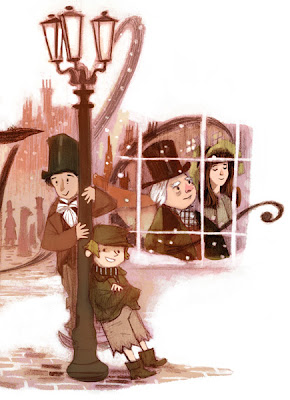 “Of course, arriving at the final image was a slight technical challenge (as crowd scenes depicted at 500 pixels wide tend to be). So I worked a bit at making the overall shapes and gestures of each character recognizable even at small sizes.
“Of course, arriving at the final image was a slight technical challenge (as crowd scenes depicted at 500 pixels wide tend to be). So I worked a bit at making the overall shapes and gestures of each character recognizable even at small sizes.
For example, Scrooge’s back is drawn exaggeratedly hunched over. Tiny Tim looks even smaller compared to the ghostly apparitions in the sky behind him. Pip’s arm is tucked behind him, and he looks meek compared to Estella, who towers over him.”
Read MoreBritta Riley: A Garden in my Apartment
Britta Riley is an artist, exhibition designer, and social entrepreneur
who works with social media to create mass participation in solving
environmental problems.
Her artwork has been featured at MoMA NY,
the Whitney, the Venice Biennial, Ars Electronica, on the Discovery
Channel’s Planet Green, Good Morning America,NPR and hundreds of
other press venues.
In this video of her presentation at TEDtalks, she makes a very interesting point in contrasting what is proving to be the new enlightened way of shared world-community living, with the outdated and often damaging “bully boy takes all” mentality that seemed to have seeped into the essence of giant multinational corporate thinking, which has apparently lost sight of humanity in its haste to try to monopolise all things, at any cost.
“I like many of you am one of the two billion people on earth who live in cities, and there are days when I palpably feel that I rely on other people for pretty much everything in my life and some days that can even be a little scary.
SOS: (Open) Source Of Solutions
But what I’m here to talk to you about today is how that same inter-dependence is actually an extremely powerful social infrastructure that we can harness to help heal some of our deepest civic issues, if we apply open source colaboration.
A couple of years ago, I read an article by New York Times writer Michael Collins in which he argued that growing even some of our own food is one of the best things that we can do for the environment.
Now at the time that I was reading this it was in the middle of the winter, and I definitely did not have room for a lot of dirt in my New York City apartment, so I was basically willing to settle for just reading the next wired magazine and finding out how the experts were going to figure out how to solve all these problems for us in the future. But that was actually exactly the point that Michael Collins was making in this article, that its precisely when we hand over the responsibility for all of these things over specialists that we cause the kind of messes that we see with the food system.
NASA’s Food for Starships
So, I happen to know a little from my own work about how NASA has been using hydroponics to explore growing food in space and that you can actually get optimal nutritional yields by running a kind of high quality liquid soil over plants root sytems.
Now, to a vegetable plant, my apartment has got to be about as foreign as outer space but I can offer some natural light and year-round climate control.
Fast forward two years later.
We now have window farms which are vertical hydroponic platforms for food growing indoors, and the way it works is that there’s a pump at the bottom which periodically sends some of this liquid nutrient solution up to the top, which then trickles down through the plant’s root systems, which are suspended in clay pellets, so there’s no dirt involved.
A Creative Alternative to Corporate Intellectual Property
Light and temperature vary with each window’s microclimate, so a window farm requires a farmer, and she must decide what kind of crops she is going to grow in her window farm, and whether she is going to feed her food organically.
Back at the time that the window farm was no more than a technically complex idea that was going to require a lot of testing and I really wanted to be an open project because hydroponics is one of the fastest growing areas of patenting in the United States now, and could possibly become like Monsanto where we have a lot of corporate intellectual property in the way of people’s food.

Artist Britta Riley's practical demonstration of the power of shared creativity in her open-source Window Farming project
So, I decided that instead of creating a product, I was going to open this up to a whole bunch of co-developers. The first few systems that we created kinda worked. We were actually able to grow about a salad a week in a typical New York City apartment window and we were able to grow cherry tomatoes and cucumbers, all kinds of stuff.
But the first few systems were these leaky, loud, power guzzlers that Martha Steward would definitely never have approved. So, to bring on more co-developers, what we did was we created a social media site on which we published the designs, we explained how they worked and we even went so far as to point out everything that was wrong with these systems. And then we invited people all over the world to build them and experiment with us. So actually now with us on this website we have 18,000 people and we have window farms all over the world.
R&D-I-Y
What we’re doing is what NASA or large corporations would call R&D or Research and Development, but what we call it is R&D-I-Y, or Research and Develop It Yourself. So, for example, Jackson came along and suggested that we use air pumps, instead of water pumps. It took building a whole bunch of systems to get it right, but once we did we were able to cut our carbon footprint nearly in half. Tony in Chicago has been taking on growing experiments like lots of other window farmers, and he’s been able to actually get his strawberries to fruit for nine months of the year in low-light conditions by simply changing out the organic nutrients.
And window farmers in Finland have been customising their window farms for the dark days of the Finnish winters by outfitting them with LED growlights that they are now making open-source and part of the project. So window farms have been evolving through a rapid versioning process similar to software and with every open-source project the real benefit is the interplay between people customising the systems for their own particular concerns, and the universal concern.
Free to Anyone, Anywhere
So my core team and I are able to concentrate on the improvements that actually benefit everyone, and we’re able to look out for the needs of newcomers, so for DIYers we provide free, very well tested instructions so that anyone anywhere around the world can build one of these systems for free, and there’s a patent pending on these systems as well that’s held by the community and to fund the project, we create products that we then sell to schools and to individuals who don’t have time to build their own systems.
Now within our community, a certain culture has appeared. In our culture it is better to be a tester who supports someone else’s idea than it is to be just the idea guy. What we get out of this project is we get support for our own work as well as an experience of actually contributing to the environmental movement in a way other than just screwing in new lightbulbs. But I think that Eileen expresses best what we really get out of this which is the actual joy of collaboration. She expresses here what it is actually like to see someone halfway across the world having taken your idea, built upon it and then acknowledging you for contributing.
We Need to “Do” More Than “Consume”
If we really want to see the wide consumer behaviour change that we’re all talking about as environmentalists and food people, maybe we just need to ditch the term “consumer” and get behind the people who are doing stuff.
Open source projects tend to have a momentum of their own what we’re seeing is that R&DIY has moved beyond just window farms and LEDs into solar panels and aquaponic systems 7:20 and we’re building apon innovations of generations who went before us, and we’re looking ahead at generations who really need us to re-tool our lives now.
So we ask that you join us in rediscovering the value of citizens united and to declare that we are all still pioneers.”
For more information on window farming, see http://www.windowfarms.org/
Britta Riley’s own website: http:// brittariley.carbonmade.com
Nathalie Miebach: Art made of storms
A unique artist who makes silent weather patterns tangible in her work, and even turns the results into musical scores.
Every artist has something unique to offer, but some art forms exceed the norms in an exceptional way. The work of Nathalie Miebach is anything but typical.
This instructor and maker of art holds two master’s degrees and has participated in dozens of solo and group exhibitions. Being a lover of art, science and music, Miebach found a way to take her vigorous passion and combine all three. In her latest series: “Sculptural Musical Scores” the result is baskets made of reed wood turned weather models with a musical twist.
Weather to be an Artist
Miebach makes use of a basket’s horizontal and vertical elements and carefully constructs 3-dimensional grids of weather data based on real-life weather patterns. Miebach has a long-time fascination with weather, and in her work the natural phenomenon we call storms are transformed into sculptures and musical compositions.
Miebach’s process always starts simple, with data collection using the Internet and supplies she accumulates at the hardware store. The result, however, is a mathematically complex mix of beads and colored bands. Although the tangled sculptures are complicated and sophisticated, every single detail represents something.
The Music of Nature
Components that may be indicated in Miebach’s sculptures include moon phases, air and water temperature, temperature ranges and tide levels. Each color, bead and band symbolizes a weather element that can also be read as a musical note. Using the weather data she collects, Miebach weaves together one of her intricate sculptures and then composes them into real musical scores.
“These pieces are not only devices that map meteorological conditions of a specific time and place, but are also functional musical scores to be played by musicians,” Miebach explains on her website.
“My work focuses on the intersection of art and science and the visual articulation of scientific observations. Using the methodologies and processes of both disciplines, I translate scientific data related to astronomy, ecology and meteorology woven sculptures. My method of translation is principally that of weaving – in particular basket weaving – as it provides me with a simple yet highly effective grid through which to interpret data in three-dimensional space.
By staying true to the numbers, these woven pieces tread an uneasy divide between functioning both as sculptures in space as well as instruments that could be used in the actual environment from which the data originates.”
Weaving Numbers into Sculptures
“My method of translation is principally that of weaving – in particular basket weaving – as it provides me with a simple yet highly effective grid through which to interpret data in three-dimensional space. By staying true to the numbers, these woven pieces tread an uneasy divide between functioning both as sculptures in space as well as instruments that could be used in the actual environment from which the data originates.
Central to this work is my desire to explore the role visual aesthetics play in the translation and understanding of science information. By utilizing artistic processes and everyday materials, I am questioning and expanding boundaries through which science data has been traditionally visually translated (ex: graphs, diagrams), while at the same time provoking expectations of what kind of visual vocabulary is considered to be in the domain of ‘science’ or ‘art’.”
The video is from the TEDtalksDirector YouTube channel, posted on the 21 Oct 2011.
For more information about this artist and to view samples of her work, visit nathaliemiebach.com.
Read More

